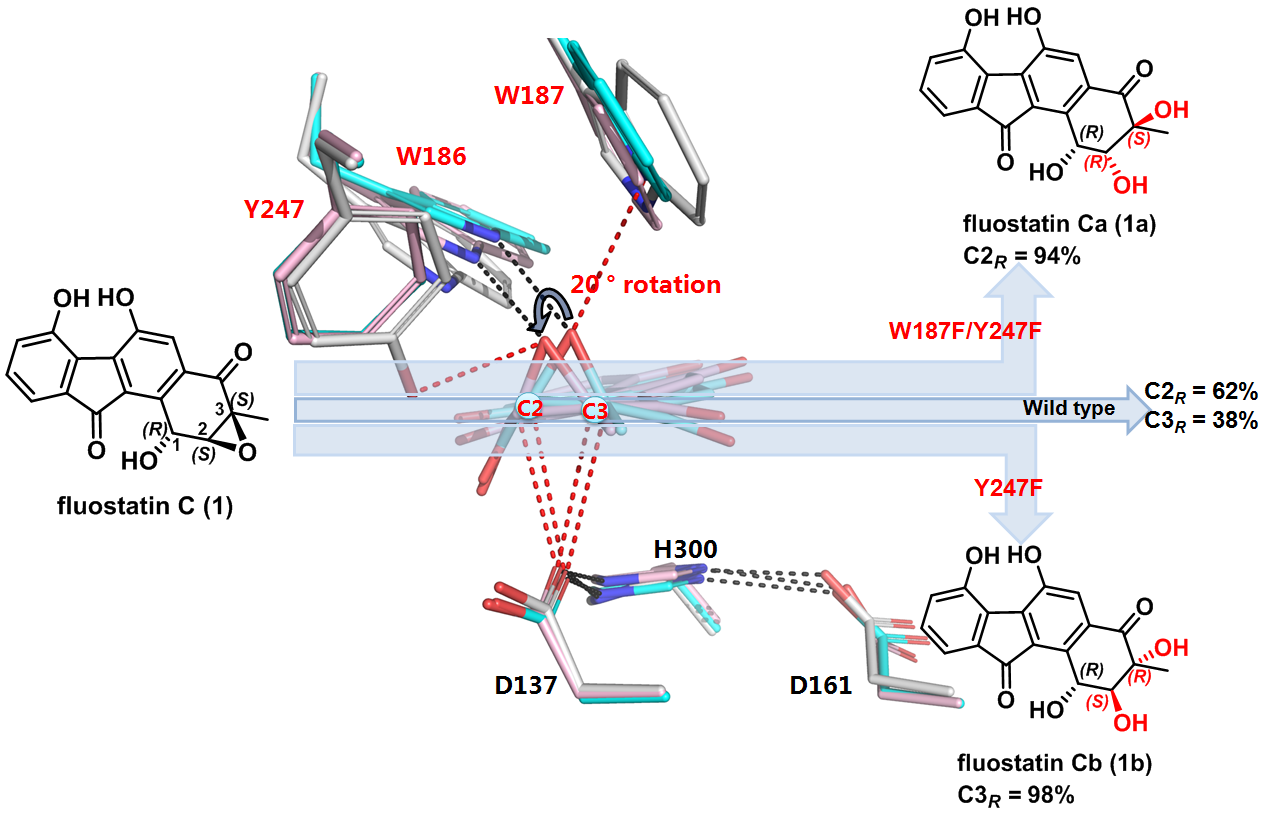Epoxide hydrolases (EHs) have been characterized and engineered as biocatalysts that convert epoxides to valuable chiral vicinal diol precursors of drugs and bioactive compounds. However, the regioselectivity control of the epoxide ring opening by EHs remains challenging.
Alp1U is an α/β-fold EH that exhibits poor regioselectivity in the epoxide hydrolysis of fluostatin C (1), and produces a pair of stereoisomers.
Recently, researchers led by Prof. ZHANG Changsheng from the South China Sea Institute of Oceanology (SCSIO) of the Chinese Academy of Sciences found that mutation of an atypical oxirane oxyanion hole could significantly improve regioselectivity of the α/β-fold epoxide hydrolase Alp1U to provide almost optically pure products.
This work was published in Journal of Biological Chemistry on Oct. 1.
Researchers from ZHANG's group have previously shown that the α/β-fold EH Alp1U found in Streptomyces ambofaciens also uses fluostatin (FST) C (1) from marine-derived Micromonospora rosaria as a substrate. However, Alp1U exhibits poor regioselectivity in the epoxide hydrolysis of 1, and produces a pair of stereoisomers, 1a and 1b.
In this study, they established the absolute configuration of the two stereoisomeric products 1a and 1b and determined the crystal structure of Alp1U.
Alp1U structurally showed conserved overall fold as classic α/β-EHs, but featured a unique triad (W186/W187/Y247) to assemble an atypical oxirane oxygen hole.
Mutation of residues in the atypical oxirane oxygen hole of Alp1U improved the regioselectivity for epoxide hydrolysis on 1. The single site Y247F mutation led to highly regioselective (98%) attack at C-3 of 1, while the double mutation W187F/Y247F resulted in regioselective (94%) nucleophilic attack at C-2.
To investigate the reaction details of Alp1U, researchers further solved the single crystal X-ray structures of the two regioselective Alp1U variants in complex with the substrate 1. Slight conformation changes of the substrate and residues of the oxirane oxygen hole were observed.
These structural and mutagenesis studies of Alp1U and its mutants provided further insight into the factors governing the regioselectivity of α/β-EHs.

Fig. 1 Mutation of an atypical oxirane oxyanion hole improves regioselectivity of the α/β-fold epoxide hydrolase Alp1U (Image by SCSIO)